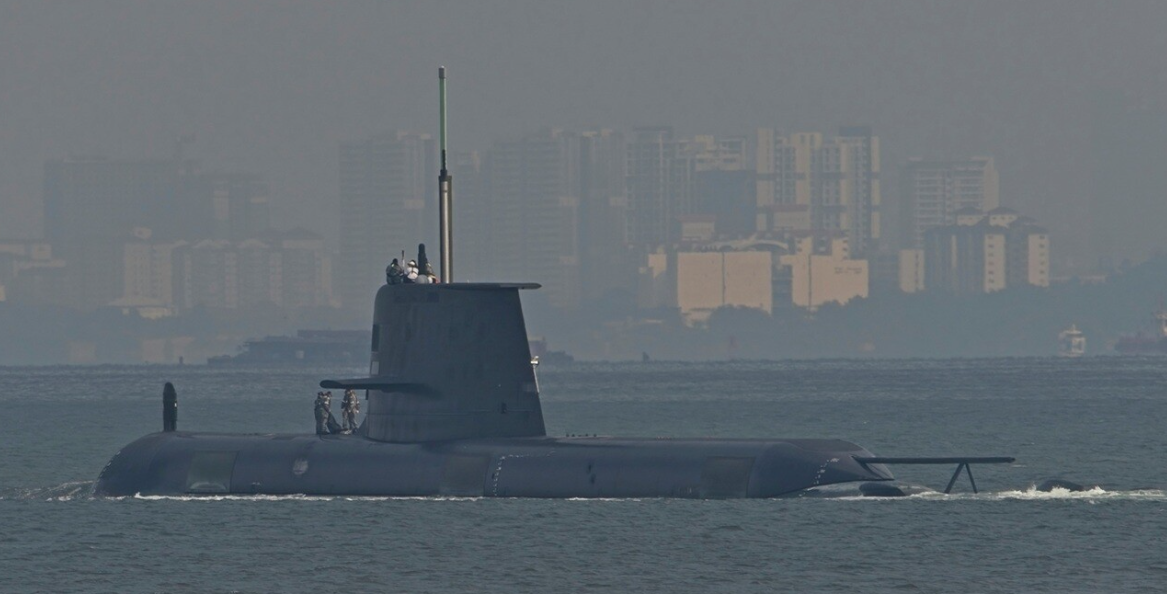Australia Is Wasting Its Money on AUKUS Submarines

Australia is not expected to receive any nuclear-powered submarines from the United States or United Kingdom until 2040—likely after it is far too late.
My colleague Dr. Elizabeth Buchanan, from the Land Down Under, put it best when she told me on an episode of my podcast that Australia needs to seriously reconsider its commitment to purchasing submarines from the Americans and British under the Australia-United Kingdom-United States (AUKUS) agreement. According to her assessment, it’s a logistically unworkable deal.

At the time of the AUKUS deal’s negotiation in 2021, it was viewed as a strategic masterstroke, helping to promote Australia as a vital counterweight to China in the Indo-Pacific. These remain noble goals. Yet the more one looks into the underlying issues with the AUKUS agreement, the more obvious it is that Buchanan is correct.
AUKUS Is a Bad Deal for Australia
Far from being the strategic masterstroke to counter China’s seemingly inexorable rise, AUKUS is a boondoggle. It is riddled with ineffective bureaucracy, running massively over budget, and strategically misaligned with Australia’s needs at the moment.
To be clear: China’s threat to Australia is the most severe it has ever been. But after years of failing to deliver, it is obvious that AUKUS is not the solution to Australia’s woes.
AUKUS was meant to expand and enhance Australia’s submarine capabilities by quickly phasing out the country’s aging submarine force and replacing it—thanks to a supposedly “streamlined” multinational process—with more modern, interoperable systems from both America and Britain. Canberra was so optimistic about AUKUS that it even broke a major contract with France in order to make AUKUS happen—a breach of trust that Paris has never forgotten.
Flash forward to three years later, and AUKUS still has failed to make good on his promises. Today, Australia is not scheduled to receive any subs from AUKUS until 2040. By that time, the Chinese People’s Liberation Army Navy (PLAN) will be operating over 100 modern, nuclear-powered submarines!
All the meanwhile, AUKUS basically writes Canberra IOUs for the next 15 years—or potentially longer, if further delays mount.
Australia Needs Submarines Now. America and Britain Can’t Deliver.
It’s not some conspiracy that’s robbing Australia of its promised nuclear-powered submarines from their allies in America and Britain. It’s sheer mismanagement of their defense industrial bases. Australia, too, has struggled to maintain an effective domestic defense industry.
Since the 1970s, when deindustrialization was all the craze among Western elites, the Western states mortgaged their futures on the shortsighted notion that they could simply offshore manufacturing jobs to developing countries—to places like China, actually—and reap windfall profits for themselves.
This strategy worked wonders for their bottom lines. But it came at the expense of national security. Today, naval construction in the United States, especially in the submarine sector, is, well, underwater.
America’s own Virginia-class program is behind schedule and over budget. Shipyards in the United States are barely meeting domestic needs. Washington can’t even deliver submarines to its own Navy on time. Australia? Forget about it.
The Royal Navy is in even worse shape. The UK’s Astute-class submarine program is a technological marvel on paper. But politics and budgetary constraints are complicating its production. For that matter, London is struggling to maintain its navy entirely, let alone export complex, nuclear-powered subs to the other side of the world.
Meanwhile, billions of Australian taxpayer dollars are being funneled into the failing shipyards of the United Kingdom and United States, training programs, and supply chains—all with those two countries not only failing to meet their end of the agreement. Canberra would likely have been better off sticking with the original French agreement rather than being taken for a ride by the Americans, the British, and Australia’s own leaders.
Australia, like so many other countries in America’s orbit, must stop trying to recreate their armed forces—in this case, the Royal Australian Navy—into miniature versions of the US Navy. Instead, Australia must play to its strategic strengths. This country sits on the doorstep of the Indo-Pacific, with deep ports, a relatively stable government, and untapped industrial capacity.
Here’s What Australia Should Do Instead
As Dr. Buchanan has argued elsewhere, Australia must become the Western Pacific’s foremost rearmament, resupply, and repair hub for allied submarines. This is the role Australia is well-positioned to play. Rather than trying to build its own fleet of nuclear-powered subs—which it cannot do alone, and will not see for more than 15 years, likely after it is far too late—Australia must instead harden and expand its ports.
Canberra must invest in advanced repair and drydock facilities. Submarines break. They need maintenance, often far from home. Give US and allied commanders the confidence that if a boat breaks in the South China Sea (SCS), it can be in dry dock in Perth or Darwin within a week—not limping all the way back to Hawaii for US maintenance. If a war with China erupts, the United States will need reliable safe harbors in the region in which they will be tasked with fighting. Australia offers this.
What’s more, the future of conflict in the Indo-Pacific is one of attrition and logistics. China has built the infrastructure for it. The West has not—at least not yet. Australia can fill that gap—building itself up as a stockpile for fuel, food, torpedoes, drones, and so on. Let Australia become America’s primary forward operating base for any potential frontline in the region; let the US and UK station their subs in Australia full-time, not just for token visits.
This is far cheaper, faster, and far more credible as a deterrent than trying to either build a domestic fleet from scratch or wait around for the defense industrial bases of America and Britain to finally live up to their loftiest promises to Canberra.
By becoming a logistics and maintenance hub for US, British, and other allied submarines and warships, eventually, Australia will build the capacity so that one day it could conceivably build its own submarines—though its defense industry would need to work up to that. Essentially, Australia—indeed, the rest of the “post-industrial” West—must relearn how to make important things again. But relearning requires rebuilding and restoring capabilities squandered upon the altar of the finance sector’s need for short-term profit.
That’s a long, hard road. If Australia starts walking it, it will contribute more both to its own defense and the protection of its allies better than any agreement under the auspices of AUKUS could produce.
- Questions and Answers
- Opinion
- Motivational and Inspiring Story
- Technology
- Live and Let live
- Focus
- Geopolitics
- Military-Arms/Equipment
- Security
- Economy
- Beasts of Nations
- Machine Tools-The “Mother Industry”
- Art
- Causes
- Crafts
- Dance
- Drinks
- Film/Movie
- Fitness
- Food
- Games
- Gardening
- Health
- Home
- Literature
- Music
- Networking
- Other
- Party
- Religion
- Shopping
- Sports
- Theater
- Health and Wellness
- News
- Culture

